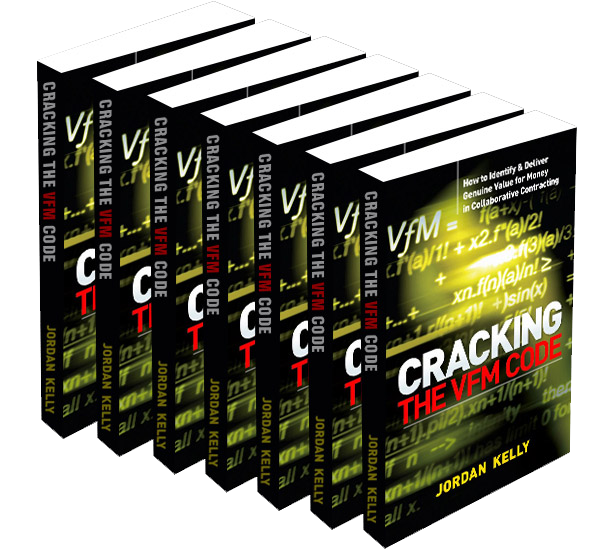CATEGORIES:

Lowest price or value for money (‘VfM’)?
It’s an age-old dilemma in big-ticket public sector procurement.
It’s also a particularly topical one on the still-embryonic New Zealand Public Private Partnership scene.
New Zealand Treasury has gone to great pains to convince the marketplace that its PPP model is different to its Australian counterparts: it’s going for best bang for the buck. Leave the pared-down price approach to the Aussies, say the Kiwi budgetary bureaucrats.
The NZ Treasury’s communicated view is that the objectives of any specific PPP are bigger than the venture itself. In PPPs involving services and construction, such as the two transactions that have reached financial close to date – Wiri Prison and the Hobsonville Schools – they’re a catalyst for challenging traditional forms of delivering “State” services.
Fair to say that, to date, those heading Treasury’s Public Private Partnership Program have indeed looked towards the big picture goal of instilling industry with an integral understanding of their intention that New Zealand’s PPPs be first and foremost outcome-based and full-term oriented. This approach, their Treasury people say, is the foundation upon which the success of Kiwi PPPs will rest for both the public and the private sector.
The Treasury has also communicated its intent that the initial procurement processes surrounding a PPP will be used as an exercise to bring about an appreciation by the public sector of the true cost of providing assets and delivering associated services. The end game is firstly to bring about better capital asset management and improved performance in terms of service provision, and secondly to improve agencies’ understanding of whole-of-life asset costs and how to best manage the trade-off between capital and operational expenditure.
It’s a whole new focus for a public sector that has traditionally, in its procurement processes, placed its emphasis on design and construction cost.
But in all of this there’s a slew of dilemmas for consortia entering into the high-stakes arena of bidding a Public Private Partnership project.
‘Adding Value’ or ‘Lowest Cost’? It’s Not As Clear-Cut As It Used to Be
The difference between adding value within a project budget envelope and meeting the brief at the lowest cost isn’t the clear-cut equation it might at first appear to be.
Here’s how the New Zealand PPP model works in theory, and how it differs in practice to other PPP-friendly jurisdictions:
Similarly to the Victorian model (Victoria being the pace-setter), a “Public Sector Comparator (PSC)” figure is disclosed to shortlistee bidders at issue of the Request for Proposal. This is the cost that, according to the relevant Government agency’s research, the public sector can deliver the same project and services package for.
In a Kiwi PPP, a bidder’s success will depend upon how much value it delivers within this designated affordability threshold, with the detail of its proposition left to its own value-adding creativity. By contrast, in the UK, Canada and most states of Australia, bidders are favored for their ability to beat the “PSC” by as wide a margin as possible, and tender to a heavily-prescribed brief.
While bidders in a “lowest price wins” competition have their challenges, consortia conforming to the New Zealand PPP procurement model are faced with some curly questions to which there is not always an answer.
Among these is the fact that, in many instances, the PSC given to bidders isn’t always an authoritative indicator of the total project budget at all. Often only the raw construction cost, hard facilities management and service provision costs are disclosed, representing only a component of the total picture. The more comprehensive assessment – known by the Government side but not released to bidders – includes all project-specific risks, transferred and retained risks, and an allowance for the advantage the State might have (e.g. rates and taxes) over the private sector.
Savvy & Early Strategy Formulation Is the Best Solution
Savvy and early strategy formulation is the best solution to this particular problem. Developing a close understanding of the likely overall budget envelope should be first on the list of priorities for a consortium – and endeavours towards this end should begin long before the Government’s issue of the Expression of Interest documentation. Understanding this is critical to the bid strategy from the outset; it stands as a signpost for the most strategic selection of consortium partners.
Another dilemma faced by bidders is the degree and type of creativity and innovation the Government wants.
The whole idea, from Treasury and the procuring agency’s perspective, is to avoid a lot of hand-holding. Bidders are given the latitude to bring anything to the table for consideration. This, of course, also equates to being given ample rope with which to hang themselves if they haven’t done their homework and they put forward something inappropriate, irrelevant or without value. Indeed, feedback from Treasury after the closure of the first two New Zealand PPPs was that bidders expected the public sector representatives to do much of their thinking for them.
Know the Client, Know the Client, Know the Client
Here again, the best advice for bidders is to know the client, its issues and its project objectives. Backwards. And upon that foundation, to do a great deal of market research, options assessment, lateral thinking and (non-probity-compromising and educated) opinion testing.
On a related note, PPP novices need to understand the nuances of the PPP model itself, especially in terms of the dynamics and apportionment of responsibilities between the various partners in a consortium. The best bid is likely to be tabled by the consortium that not only does comprehensive research both of the client and of the possible solutions, but the members of which work tightly together to produce the best-bundled solution, ensuring a genuine seamlessness of asset and ongoing operation and service.
Needless to say, this assurance needs to go beyond simply the carefully crafted words of a consortium’s bid. Government needs to be assured of a well co-ordinated, seamless approach to project management once the facility comes on-stream and throughout its typically 25-year concession.
Underlying all of this is a potential trap for bidders: Is the Government’s message about best value versus lowest cost actually to be trusted? And even if it can be relied upon now, what about on into the future?
Too Early to Take the ‘Best VfM’ Message At Face Value
A close colleague of mine, James Mitchell, is a veteran of the Australian PPP scene – and he’s notched up a serious number of both bidding and project roll-out successes. He cautions Kiwi bidders against getting too comfortable with Treasury’s “best bang for the budget” message. A few more miles yet need to be put on the Kiwi model before anyone can hang their hat on a consistent trend, he reckons.
Politicians, Treasury departmental heads, project owner executives, and the individual and collective priorities of each change, Mitchell counsels from the benefit of his 14 years’ experience. There’s also the reality that it’s the procurement agencies that ultimately award the contracts, and it’s always possible the Treasury position might meet with a conflicting agency viewpoint.
He further points to the fact that there have been a good number of lowest price bids that turned out laudable service improvement outcomes for the Australian public sector – some by default and some by intention. The Perth CBD Law Courts and its conversion (by the lowest cost bidder) from a risk-ridden low or no-tech environment to a well-oiled high-tech machine is but one example. New Zealand decision-makers could make note of such lowest-cost and best-value project outcomes and, at any point, decide to have their cake and eat it too.
Creativity or Cost?
In the meantime, it’s critical to know which way to pitch: creativity or cost?
Again, the admonition is to know your client, know your client, know your client.
That’s obviously the objective of any bid strategy. But putting together a clear and present picture of the client’s world in the context of an intended PPP procurement requires the application of strategy fundamentals across a vaster, multi-faceted and multi-organisational canvas.
The scale of the average PPP makes bidding a PPP a highly complex endeavour. Understanding the project means the novice local bidder is going to have to dig a lot deeper than it’s used to digging to understand client priorities, motivations and parameters. Meantime – to the extent that the Governmental messages are to be trusted – the seasoned Aussie contingent would be well-advised to remember the current brief: It really is about VfM; not dropping your pants on price.
CRACKING THE VfM CODE
How to Identify & Deliver Genuine Value for Money in Collaborative Contracting
Book 1 in the 'Code' duo, this weighty 350-page, high-quality paperback production offers an unprecedented degree of insight into what it takes to produce a consistent record of value-for-money results in major public infrastructure projects.
The result of two years’ background research and investigation, it features numerous up-close-and-personal interviews with industry, thought and opinion leaders from around Australia, New Zealand and further afield, and captures in detail all aspects of the energetic and robust “VfM” debate.
Available individually or as a six-pack (6 for the price of 5).
CRACKING THE VfM CODE IN COLLABORATIVE CONTRACT BIDDING
Understanding It & Articulating Your Ability to Deliver It

Completing the 'Code' duo, Book 2 offers insightful and authoritative mentorship and intelligence on winning high-value, collaborative contracting bids.
The duo's collective insights provide a powerful competitive advantage for any organisation wanting to sharpen its understanding of “VfM”, and to demonstrate – through its bids – its ability to apply that working knowledge to a client’s project.
NB: Each book is a fully self-contained, stand-alone production in its own right.
Available individually or as a six-pack
(6 for the price of 5).



